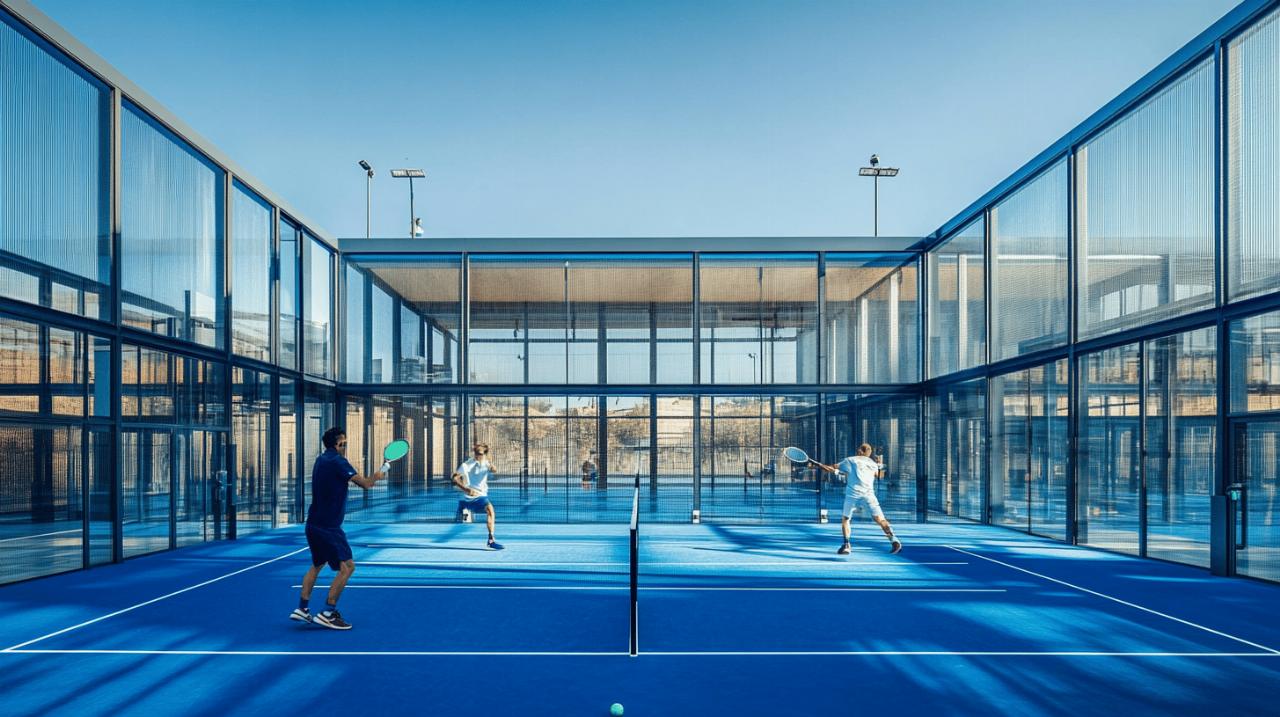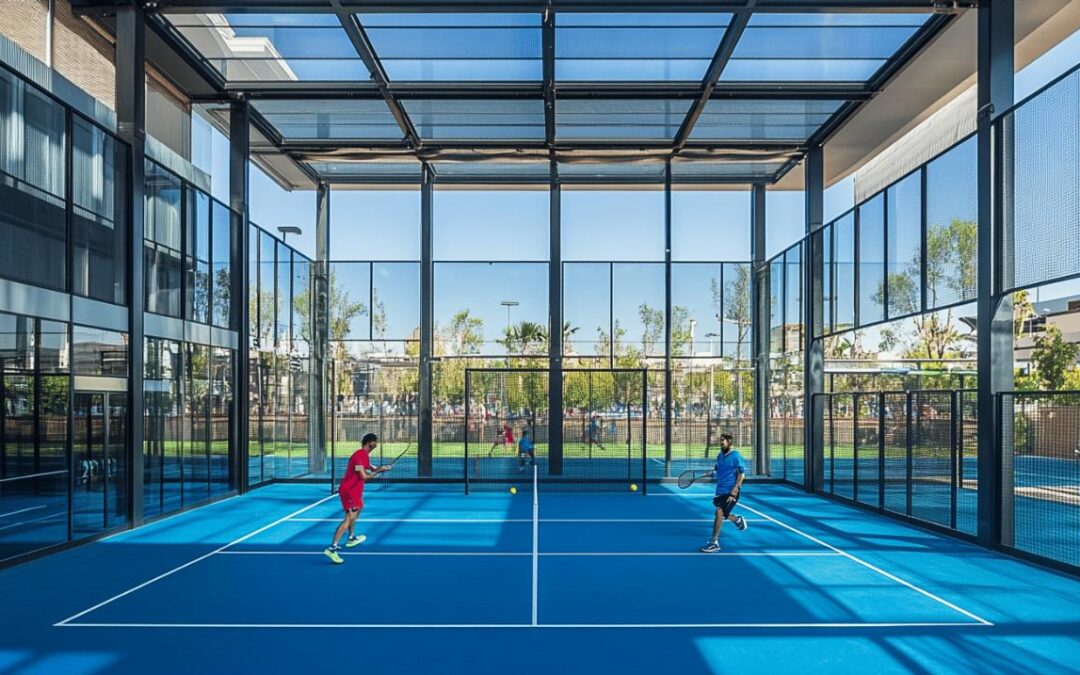Padel has swiftly emerged as one of the most exciting racket sports on the global stage, blending the tactical depth of tennis with the fast-paced unpredictability of squash. For those stepping into the competitive arena, understanding the official regulations governing tournament play is essential. Whether you are a newcomer eager to compete or a seasoned player refining your knowledge, grasping the nuances of padel rules ensures fair play and enhances your strategic approach on the court.
Fundamentals of the Padel Court and Equipment Standards
Court Dimensions and Wall Specifications for Competitive Play
The padel court is notably smaller than a standard tennis court, designed specifically to facilitate rapid exchanges and dynamic rallies. Enclosed by a combination of glass walls and metal caging, the structure is integral to the sport's identity. The glass walls are typically positioned at the back and sides of the court, allowing players to utilise them during play while maintaining clear visibility for spectators. The metal cage, often constructed from wire fencing, completes the enclosure and defines the boundaries within which the ball must remain during a rally. These walls are not merely obstacles but active components of gameplay, providing opportunities for strategic shot-making and defensive returns. In official tournaments, the precise specifications of these structures are rigorously maintained to ensure consistency and fairness across all competitive matches.
Approved Racket and Ball Requirements in Official Tournaments
Equipment standards in padel are carefully regulated to maintain a level playing field. Padel rackets differ significantly from tennis rackets in both design and construction. They are shorter, stringless, and typically feature a solid hitting surface perforated with holes to reduce air resistance. This unique design allows for greater control and precision during fast exchanges at the net. The balls used in padel resemble tennis balls in size and appearance but are manufactured with slightly lower internal pressure. This adjustment ensures the ball bounces appropriately on the court surface and interacts correctly with the glass and metal structures. Tournament organisers and governing bodies ensure that all equipment adheres to approved specifications, safeguarding the integrity of competitive play and providing uniformity across events.
Service Regulations and Proper Technique in Tournament Settings
Underhand service requirements and positioning rules
The serve in padel is executed underarm, a distinctive characteristic that sets it apart from tennis. Before striking the ball, the server must bounce it once on the ground behind the service line. The ball must be hit at or below waist height, and during the entire service motion, the server must keep one foot on the ground without touching the service line. This rule ensures that the serve remains a controlled and fair start to each point. The server must deliver the ball into the service box located diagonally opposite on the opponent's side of the net. During the serve, the court lines are considered in play, meaning the ball must land within the designated area. If the serve bounces correctly in the service box and subsequently contacts the side or back wall, it is deemed valid. However, if the ball strikes the wire fencing after bouncing in the service box, it is ruled a fault.
Fault conditions and second service opportunities
As in tennis, players are granted two opportunities to execute a successful serve. If the first serve results in a fault, the server is permitted a second attempt. A let occurs when the ball touches the net during the serve and then lands correctly in the service box before making contact with the side or back wall. In such cases, the serve is replayed without penalty. Should the ball hit the net and subsequently touch the wire fencing or land outside the service box, the serve is considered a fault. Understanding these conditions is crucial for tournament play, as service consistency can significantly influence the outcome of a match. Players must balance precision and power while adhering to the strict underarm delivery and positioning regulations that define the sport.
In-play rules and wall usage during competitive matches
Legal ball returns and bounce regulations
 Once the serve is successfully delivered, the receiving team must return the ball after it bounces once on their side of the court. The ball is allowed to hit the walls after bouncing, and players can use the glass surfaces to angle their returns strategically. However, the ball must not bounce twice on the same side before being returned over the net. If it does, the point is awarded to the opposing team. Players are permitted to strike the ball off any wall on their own side of the court, creating opportunities for creative shot-making and defensive play. Volleys, where the ball is hit before bouncing, are allowed during general play but are strictly prohibited on the serve and the return of serve. This rule encourages rallies and prevents overly aggressive net play immediately following the service exchange.
Once the serve is successfully delivered, the receiving team must return the ball after it bounces once on their side of the court. The ball is allowed to hit the walls after bouncing, and players can use the glass surfaces to angle their returns strategically. However, the ball must not bounce twice on the same side before being returned over the net. If it does, the point is awarded to the opposing team. Players are permitted to strike the ball off any wall on their own side of the court, creating opportunities for creative shot-making and defensive play. Volleys, where the ball is hit before bouncing, are allowed during general play but are strictly prohibited on the serve and the return of serve. This rule encourages rallies and prevents overly aggressive net play immediately following the service exchange.
Permitted wall play and out-of-court return scenarios
One of the most distinctive features of padel is the ability to use the walls as part of the playing surface. If the ball bounces on the floor and then contacts the back glass, the shot remains in play and can be returned legally. However, if the ball strikes the back glass or the metal cage without first bouncing on the floor, it is considered out. Similarly, if the ball bounces twice before making contact with the back glass or cage, it is also ruled out. Players are even allowed to leave the court boundaries to return a ball that has rebounded off the walls, provided they do so before the ball bounces a second time. This adds an element of athleticism and spatial awareness that is unique to padel. A point is lost if the ball hits a player or their teammate, if it strikes the wire fencing before crossing the net, or if the ball is not returned successfully within the permitted number of bounces.
Scoring systems and tournament point allocation
Match structure and set winning requirements
The scoring system in padel mirrors that of tennis, utilising the familiar progression of fifteen, thirty, forty, and game. Players must win by a margin of two clear points to secure a game. A set is typically won by the first team to reach six games, provided they maintain a two-game advantage over their opponents. If both teams reach five games each, the set continues until one team achieves a two-game lead. In many tournament formats, a tie-break is introduced if the set reaches six games all, ensuring matches progress efficiently while maintaining competitive integrity. Matches are generally contested as best-of-three sets, meaning the first team to win two sets is declared the victor. This structure demands both physical stamina and strategic acumen, as players must sustain high levels of performance across potentially lengthy encounters.
Tie-break procedures and point-winning conditions
When a set reaches six games apiece, a tie-break is initiated to determine the winner of that set. The tie-break follows a first-to-seven points format, with players required to win by a margin of two points. Service alternates between teams after the first point and then every two points thereafter, ensuring fairness and variety in play. During the tie-break, positioning and shot selection become critical, as the shorter format leaves little room for error. Points are won in the same manner as during regular play, with teams losing points if they fail to return the ball before it bounces twice, hit the ball into the net, or send it out of bounds. Mastery of the tie-break format is essential for success in tournament play, as it often decides closely contested matches and requires players to perform under pressure with precision and composure.




